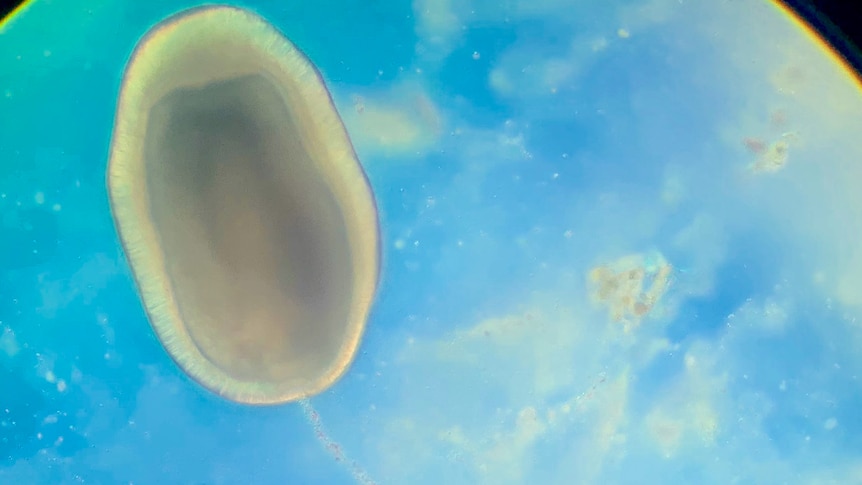Little is known about the dietary requirements of coral larvae but new Australian research has revealed feeding them can improve their chances of survival.
Key points:
- New research has found feeding coral larvae boosts their energy levels at a critical stage of development
- It is not yet known exactly how the larvae feed
- Scientists believe the findings will help improve the success rate of reef restoration projects
A study by Southern Cross University PhD candidate Colleen Rodd, published in the journal Frontiers in Marine Science, found giving the larvae supplement nutrients boosts their energy at a critical early stage of development.
Scientists expect the findings will improve the effectiveness of coral restoration projects being done to help degraded systems such as the Great Barrier Reef.
“Our research has shown if you do feed coral, you can drastically increase the number of those larvae that actually turn into corals on a reef, which is actually pretty exciting,” Ms Rodd said.
A shooting task
Adult coral reproduces by releasing gametes into the water, which form into coral larvae.
Those larvae face a “particularly precarious” time in the water before settling on to the reef where they grow complex skeletons.
“The larvae themselves have a finite amount of energy and they use up about 70 per cent of that in the first week of swimming around,” Ms Rodd said.
“From there they can run out of energy and die either before they can transform into a coral or shortly thereafter because transforming from a larvae into a coral is very energetically costly for them.
“Most of those larvae will die if we don’t intervene there.”
She said the feeding allowed the larvae “a little bit of leeway to make it until they turn into a polyp where they can start feeding like adults”.
What do they eat?
The coral larvae in Ms Rodd’s research were fed blended artemia — a crustacean also known as brine shrimp.
The feed contained a mix of nutrients, including proteins, carbohydrates, and fats.
How exactly the larvae feed remains somewhat of a mystery, however.
“That’s where we’re taking the research next — to figure out the exact mechanisms through which they feed,” Ms Rodd said.
“Coral larvae are very, very, very small — less than a millimeter in length — and it was assumed they can’t feed.
“They have an oral pore, not quite a mouth but nevertheless a way to take in food, but they can also absorb it through their cell wall.”
Implementing the research
Ms Rodd said feeding coral larvae used for restoration projects would be “very cheap to implement”.
Two types of mass-spawning reef-building coral species used in the research were cultured at the Australian Institute of Marine Science’s National Sea Simulator experimental facility near Townsville.
So far though, larvae have not been observed feeding in the wild.
One theory is wild coral larvae obtain their nutrients after unfertilized sperm and eggs break down in the water during spawning.
“It hasn’t been seen because you need a microscope to see it, but we are looking at some research down the line where we explore those kinds of questions,” Ms Rodd said.
“From our understanding of their life cycle, it [was] assumed they can’t feed and that they don’t or that they don’t feed because they can’t.
“This actually changes our understanding of their basic biology, which has some pretty cool implications for restoration work.”
Ms Rodd will present the research this week at the Australian Marine Sciences Association conference in Cairns.
.
